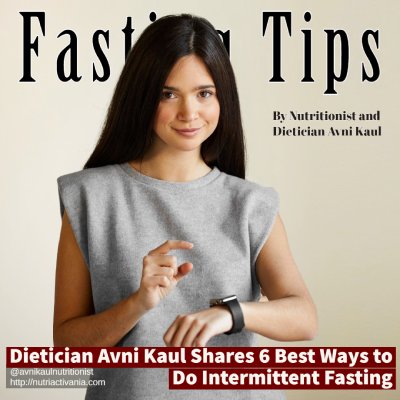
Intermittent fasting has gained significant popularity as an effective approach to weight loss and overall health improvement. Renowned weight loss dietician Avni Kaul offers valuable insights into the best ways to implement intermittent fasting. By following these expert tips, individuals can optimize their fasting routine and reap the numerous benefits associated with this eating pattern.
Fast for 12 hours a day – The 12-hour fasting method is a straightforward approach to intermittent fasting. To follow this diet, one simply needs to establish and maintain a 12-hour fasting window every day. Research suggests that fasting for 10 to 16 hours prompts the body to utilize stored fat for energy, resulting in the production of ketones and potential weight loss. This fasting plan is particularly suitable for beginners due to it’s relatively short fasting window, the inclusion of sleep time, and the ability to consume the same number of calories daily. By fasting between 7 p.m. and 7 a.m., individuals can have dinner before 7 p.m., fast overnight during sleep, and have breakfast at 7 a.m.
Fasting for 16 hours – The 16:8 method, also known as the Leangains diet, involves fasting for 16 hours a day and leaving an 8-hour eating window. It is an extension of the 12-hour fast and may be suitable for individuals who didn’t experience desired benefits with the shorter fasting period. During the 16:8 fast, men fast for 16 hours, while women fast for 14 hours. Typically, individuals finish their evening meal by 8 p.m. and then skip breakfast, not eating again until noon. A study conducted on mice following an 8-hour feeding window demonstrated protection against obesity, inflammation, diabetes, and liver disease, even when consuming the same total number of calories as mice with unrestricted eating times.
Fasting for 2 days a week – The 5:2 diet, also known as the Fast diet, involves eating a regular, healthy diet for five days a week and reducing calorie intake on the remaining two days. Typically, males consume 600 calories and females consume 500 calories on fasting days. Individuals usually schedule their fasting days non-consecutively, such as on Mondays and Thursdays, with at least one non-fasting day in between. Limited research on the 5:2 diet indicates that it can lead to weight loss and improvements in insulin levels and sensitivity. A small-scale study involving overweight women showed significant weight and fat loss during the fasting period, but measurements returned to baseline after five days of normal eating.
Alternate-day fasting – Alternate-day fasting involves fasting every other day, and there are different variations of this plan. Some individuals completely avoid solid foods on fasting days, while others consume up to 500 calories. On feeding days, people often eat without restrictions. Research suggests that alternate-day fasting is effective for weight loss dietician Avni Kaul and heart health in both healthy and overweight adults. In a study, participants lost an average of 5.2 kilograms (11 pounds) over a 12-week period. However, alternate-day fasting is an extreme form of intermittent fasting and may not be suitable for beginners or individuals with certain medical conditions. Long-term adherence may also pose challenges.
A weekly 24-hour fast – The Eat-Stop-Eat diet involves fasting completely for 1 or 2 days a week. During the fasting period, which lasts for 24 hours, individuals consume no food but can have calorie-free drinks like water and tea. On non-fasting days, regular eating patterns are resumed, allowing for unrestricted food choices. While a 24-hour fast can be challenging and may initially cause fatigue, headaches, or irritability, these effects often lessen as the body adapts. It is recommended to try shorter fasting periods, such as 12 or 16 hours, before transitioning to a full 24-hour fast.
The Warrior Diet – The Warrior Diet is an intense form of intermittent fasting characterized by a 20-hour fasting window, during which only a small amount of raw fruits and vegetables are consumed, followed by a 4-hour eating window focused on one large meal at night. It is often preferred by those who have already experimented with other fasting methods. Proponents argue that this eating pattern aligns with our natural circadian rhythms. However, adhering to strict guidelines on meal timing and content can be challenging, and there is a risk of inadequate nutrient intake, potentially impacting digestive, immune, and cancer-related health.
Avni Kaul is Founder of Nutriactivania with Masters Degree in Food and Nutrition from University of Delhi and is also a Certified Diabetes Educator from Project Hope and International Diabetes Federation. She is a Leicester Mammas Ambassador trained in Lactation Counselling with NHS United Kingdom. Mammas support pregnant and new mothers and their families. Specializations of Avni Kaul Include Infant and Young Child Feeding Practises, Pre and Post natal diets, Fat loss, Muscle Gain and Holistic Health and Nutrition